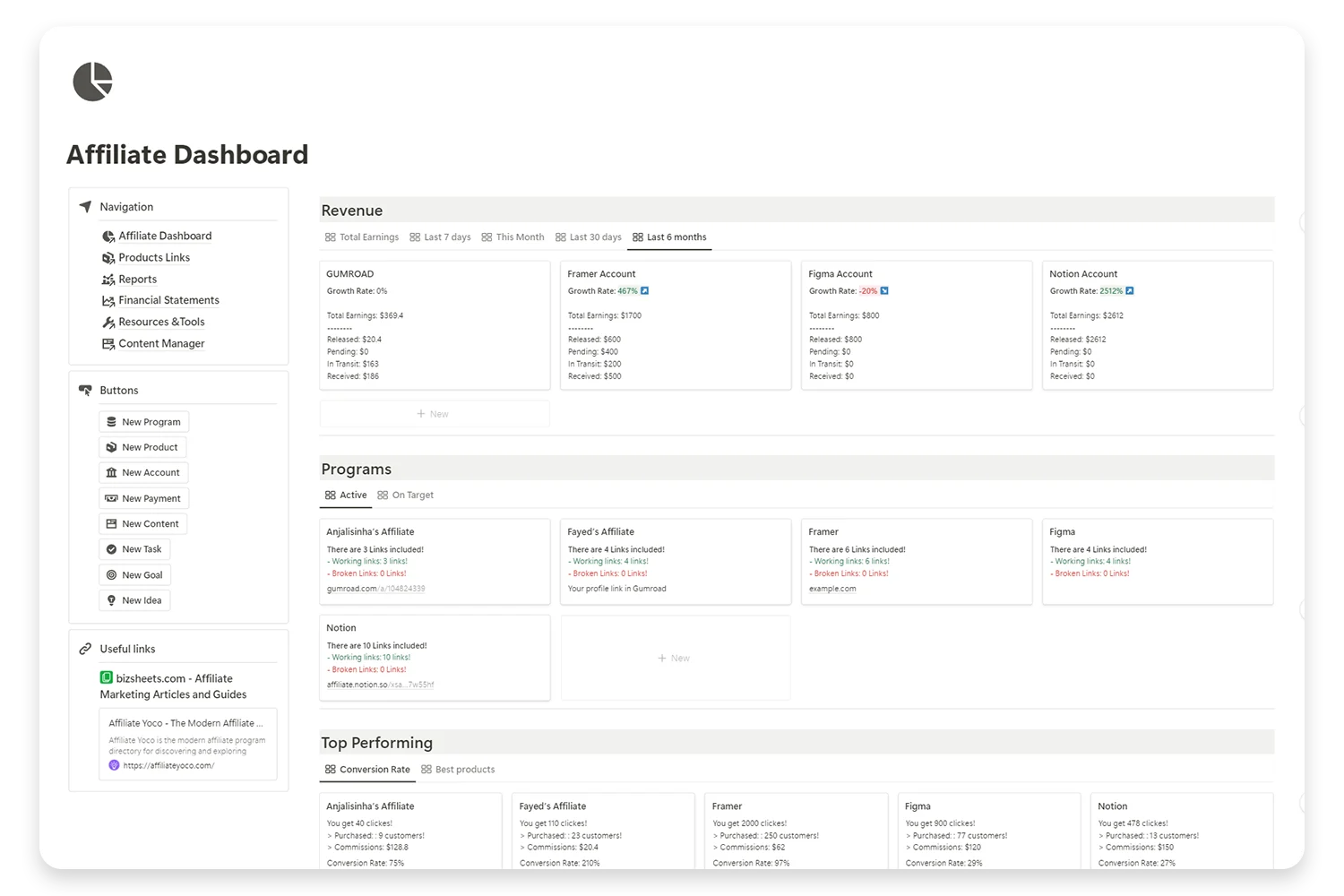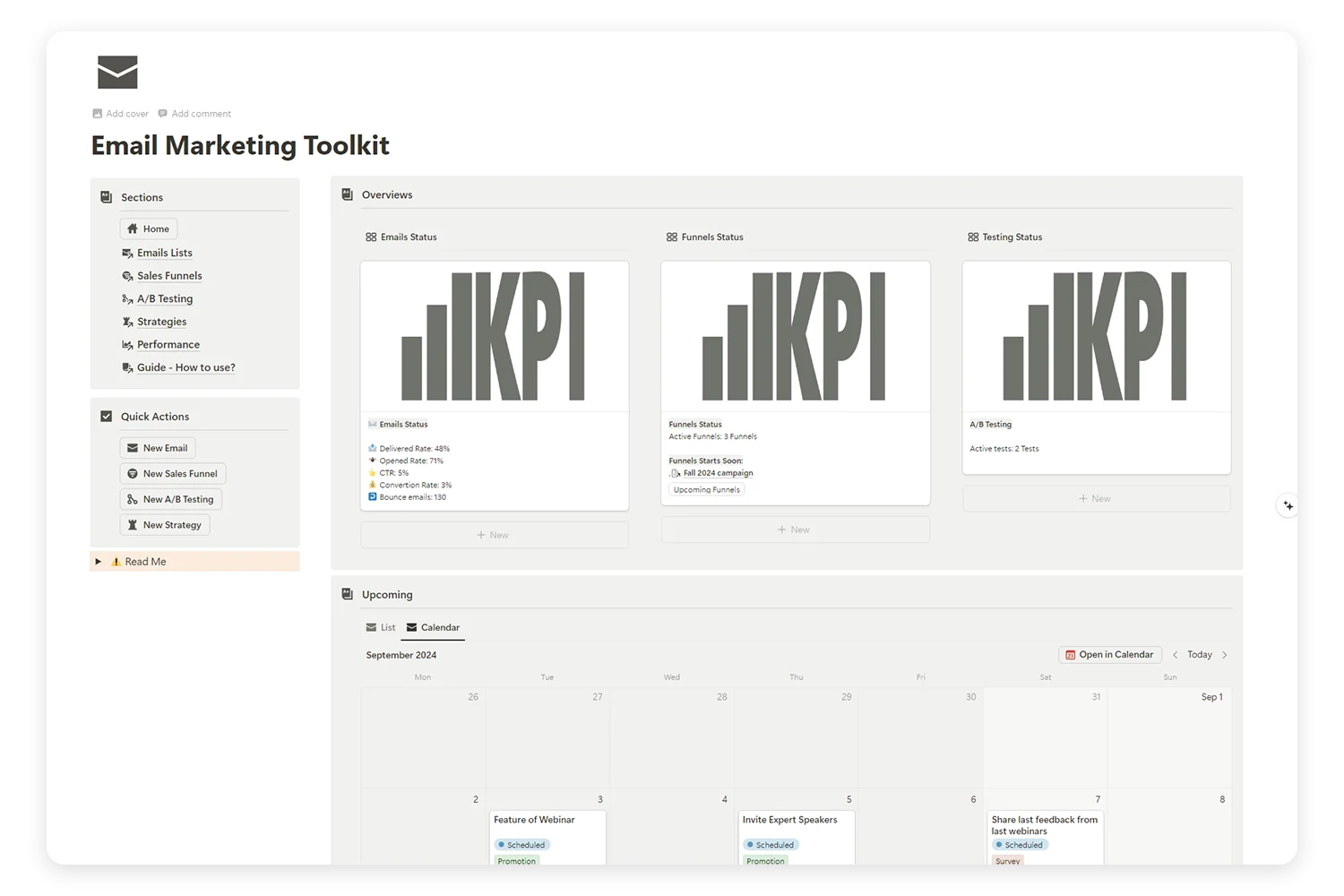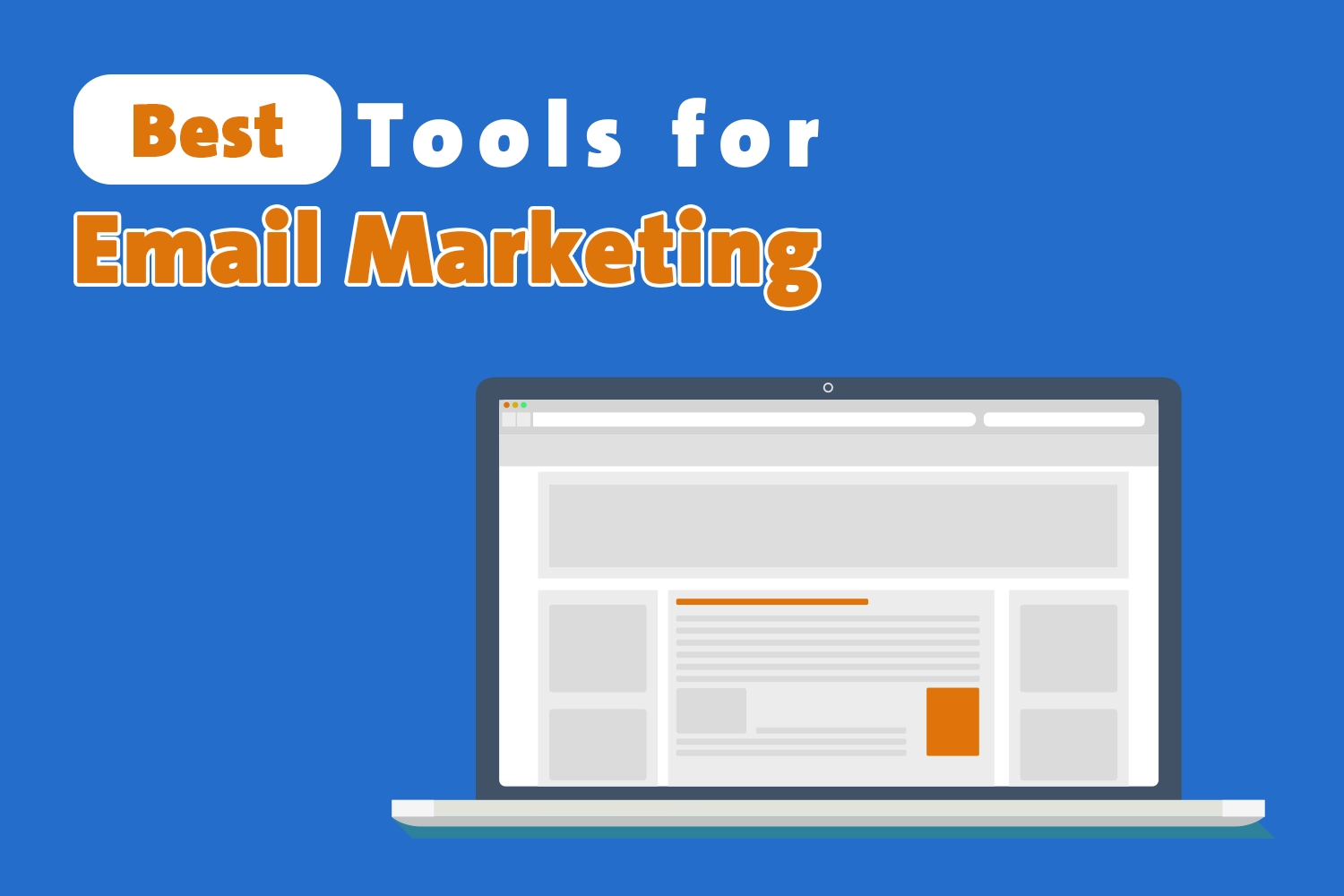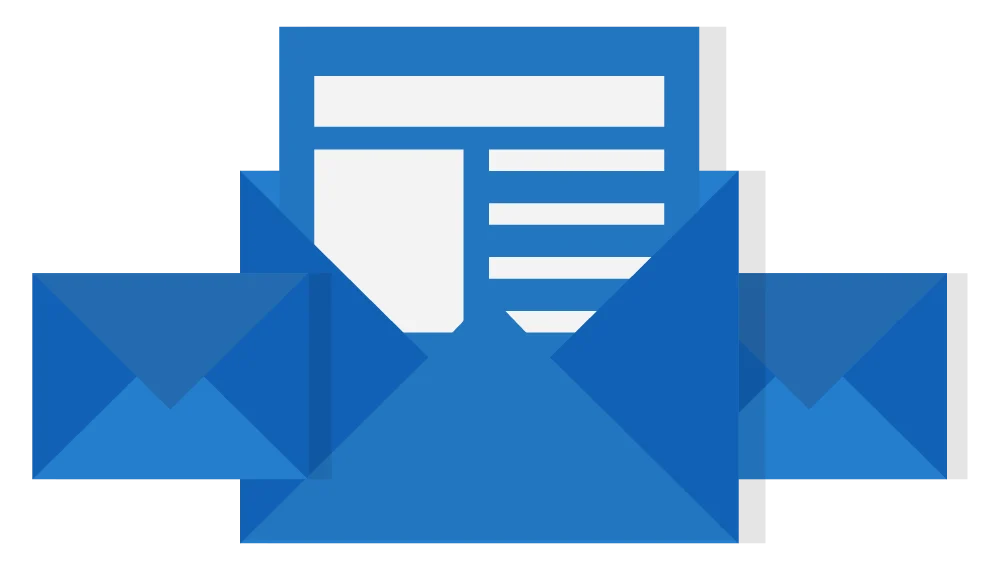Last updated on December 2nd, 2025 at 11:20 am
In the ever-evolving landscape of digital marketing, email continues to be a powerful tool for engagement and conversion. As we step into 2025, the top email marketing tools offer more sophisticated automation, in-depth analytics, and seamless integrations than ever before.
In this blog post, we’ll explore the top email marketing tools of the year 2025 Each platform offers unique features to cater to various business needs. From automated campaigns to in-depth analytics, these tools can help you optimize your email marketing efforts. Let’s dive in and discover how these
What is Email Marketing
Email marketing remains a key tool for digital communication and customer engagement. Despite the rise of instant messaging and social media, email offers a personal connection with the audience.
As we step into 2025, , the landscape of email marketing is evolving, driven by advancements in automation, data analytics, and integration capabilities that empower marketers to craft highly targeted and effective campaigns.
Artificial intelligence (AI) and machine learning have revolutionized the way we approach email marketing. These technologies empower brands to deeply analyze customer behavior and preferences. This allows for hyper-personalized messaging that resonates with individual subscribers, leading to increased engagement and conversions.
Gone are the days of one-size-fits-all newsletters. Today’s email campaigns are tailored to individual interests and needs. This personalized approach drives higher engagement and conversions.
Moreover, seamless integrations with e-commerce and CRM systems streamline workflows and enhance the customer journey.
Marketers can now automate welcome sequences, abandoned cart reminders, and targeted promotions based on past purchases. This ensures the right message reaches the right person at the right time.
As we delve into the top email marketing tools of 2025, we’ll explore how platforms like Mailchimp, ConvertKit, MailerLite, and HubSpot are harnessing these innovations to optimize email strategies.
The Importance of Automation in Email Marketing tools
Automation has transformed business communication, turning manual, time-intensive tasks into efficient strategies that boost engagement and conversions.
With automation tools, marketers can effortlessly send targeted emails based on user behavior, preferences, and engagement patterns, ensuring the right message reaches the right audience at the perfect time.
For example, if a customer abandons their cart, an automated system can trigger a follow-up email with a discount or personalized product recommendation. This improves conversion chances and makes customers feel valued.
Automation also enables advanced audience segmentation. You can group customers by demographics, purchase history, or engagement levels to deliver tailored content, improving open and click-through rates. For instance, new subscribers might get a welcome series, while loyal customers receive exclusive offers or product sneak peeks.
Additionally, automation’s analytics capabilities let you track campaign performance, providing insights into what works. This data-driven approach helps refine strategies and maximize your email marketing’s effectiveness.
Overview of Advanced Analytics in Email Marketing Tools
Advanced analytics tools have become essential for marketers looking to refine their strategies and maximize their ROI. The top email marketing platforms of 2025—Mailchimp, ConvertKit, MailerLite, and HubSpot—offer robust analytical features that empower users to dive deep into their campaign performance and customer engagement metrics.
Mailchimp
Mailchimp, renowned for its user-friendly interface, provides detailed reports tracking open rates, click-through rates, and conversion metrics. With advanced segmentation, Mailchimp allows marketers to analyze campaign effectiveness across different audience segments and tailor content accordingly.
Its predictive insights feature enables users to forecast future engagement trends based on historical data, allowing for proactive campaign adjustments.
ConvertKit
While traditionally geared towards creators and small businesses, ConvertKit has made significant strides in analytics. Its visual automation builder simplifies email sequence design and integrates seamlessly with analytics tools. This provides insights on subscriber behavior, enabling users to track how different segments interact with emails, optimize funnels, and improve customer journeys.
The platform’s reporting features track sales generated from specific campaigns, providing creators with data-driven insights for informed decisions.
MailerLite
MailerLite stands out with its straightforward, yet powerful analytics dashboard. Users can access real-time data on subscriber activity, including opens, clicks, and unsubscribe rates, all presented in visually appealing graphs and charts.
MailerLite’s A/B testing capabilities further enhance its analytics, allowing marketers to compare the performance of different subject lines, content formats, and send times. This empowers users to continuously refine their strategies based on actionable insights.
HubSpot
With its comprehensive marketing suite, HubSpot takes analytics to the next level. Its best email marketing tool is integrated with the broader HubSpot CRM, providing marketers with a holistic view of customer interactions. Users can track how email campaigns influence overall marketing performance, including lead generation and sales conversions.
HubSpot’s advanced reporting allows for in-depth analysis of email performance against various metrics, such as traffic sources and customer behavior, ensuring that every campaign is data-driven and aligned with business goals.

Elevate Your Affiliate Business with Expert Insight Management
Take control of your affiliate marketing with our comprehensive Notion template. Designed for efficiency and clarity, this template helps you manage your affiliate programs, track earnings, and optimize your strategies.
Top Email Marketing Tool for 2025
Mailchimp
Mailchimp remains a dominant force in email marketing, offering a user-friendly interface and powerful features.
A user-friendly interface simplifies email creation, allowing marketers to craft visually stunning campaigns without extensive design skills. Customizable templates quickly create brand-aligned emails.
Mailchimp’s powerful automation capabilities enable setting up automated workflows for various customer interactions, such as welcome emails, abandoned cart reminders, and post-purchase follow-ups.
The intuitive automation builder segments audiences based on behaviors or preferences, ensuring targeted messages. This enhances customer engagement and boosts conversion rates.
In addition to its automation prowess, Mailchimp’s advanced analytics tools provide invaluable insights into your email performance. You can track open rates, click-through rates, and conversions, allowing you to fine-tune your campaigns for maximum impact.
The platform’s predictive analytics feature even helps you anticipate future customer behaviors, enabling you to stay one step ahead in your marketing strategy.
Moreover, Mailchimp seamlessly integrates with e-commerce platforms like Shopify and WooCommerce, social media networks, and CRM systems.
Kit (formerly ConvertKit)
ConvertKit stands out as a top email marketing tool for creators and entrepreneurs, thanks to its user-friendly interface and robust features.
Designed with simplicity and automation in mind, it helps users grow their audience and build stronger customer relationships without requiring technical expertise.
A key highlight is its visual automation builder, which allows users to design email sequences and trigger actions based on subscriber behavior.
Whether it’s welcoming new subscribers, delivering email courses, or re-engaging inactive users, ConvertKit simplifies automation, freeing up more time for creating content and connecting with your audience.
ConvertKit also caters to creators with features like customizable landing pages and forms, making it easy to capture leads and grow subscriber lists. Whether you’re offering a freebie, hosting a webinar, or promoting a product, these tools ensure seamless lead generation.
Its segmentation tools enable personalized messaging based on subscriber interactions, boosting engagement and effectiveness. Plus, ConvertKit’s analytics provide insights into metrics like open and click-through rates, helping you fine-tune your strategy to better connect with your audience.
MailerLite
MailerLite shines in the email marketing space for its balance of simplicity and powerful features. With an intuitive interface, it’s perfect for users with minimal technical skills, allowing them to create professional, branded email campaigns using a drag-and-drop editor—no coding required.
Despite its ease of use, MailerLite offers advanced features to elevate your strategy. Its segmentation tools let you target specific audiences based on behavior and preferences, ensuring your content is relevant and engaging.
The platform’s automation tools enable businesses to set up workflows for timely, personalized communication throughout the customer journey.
A standout feature is MailerLite’s robust analytics dashboard, which provides real-time insights into open rates, click-throughs, and conversions.
These metrics help refine campaigns and maximize ROI with a data-driven approach.
MailerLite also integrates seamlessly with various third-party apps, from e-commerce platforms to CRMs and social media accounts, ensuring your email marketing aligns with your overall business goals.
HubSpot
When it comes to best email marketing tools, HubSpot stands out not just for its robust email capabilities but for its comprehensive suite of marketing solutions that extend far beyond the inbox.
In 2025, HubSpot continues to be a powerhouse for businesses looking to integrate their email marketing efforts with broader marketing strategies.
At the heart of HubSpot’s offering is its user-friendly interface, which allows marketers of all skill levels to design, send, and analyze email campaigns effortlessly.
But what truly sets HubSpot apart is its ability to connect email marketing with CRM functionalities.
This means you can segment your audience based on their interactions across various touchpoints, ensuring that your emails are personalized and relevant.
Moreover, HubSpot’s advanced analytics provide deep insights into campaign performance. You can track open rates, click-through rates, and conversions, enabling you to refine your strategies in real-time.
The platform’s A/B testing features allow you to experiment with different subject lines, layouts, and calls to action, optimizing your campaigns for maximum engagement.
But HubSpot doesn’t stop there. Its seamless integrations with other tools in your marketing stack, including social media platforms, landing page builders, and customer service software, create a unified ecosystem.
This interconnectedness allows you to automate workflows, nurturing leads through the sales funnel without sacrificing the personal touch that customers crave.
What’s more, HubSpot offers a wealth of resources, empowering users to stay informed about the latest trends and best practices in email marketing and beyond.
Integration Email Marketing with Other Tools
The ability to connect various tools and platforms is paramount to achieving streamlined operations and maximizing your campaign’s effectiveness. Seamless integrations allow you to create a cohesive ecosystem where your email marketing efforts can thrive alongside your other marketing strategies.
Tools like Mailchimp, ConvertKit, MailerLite, and HubSpot excel in this area, offering a myriad of integrations that can enhance your workflow and drive better results.
Imagine effortlessly syncing your email marketing platform with your e-commerce store, customer relationship management (CRM) system, or analytics tools.
With Mailchimp’s integrations, for instance, you can automatically import customer data from platforms like Shopify or WooCommerce, enabling you to tailor your campaigns based on real-time shopping behavior.
This not only saves you time but also ensures that your messaging is relevant and timely, increasing the likelihood of engagement.
ConvertKit takes it a step further by integrating with various landing page builders and membership platforms, allowing creators to nurture their audience with targeted content that drives conversions.
Lastly, HubSpot shines with its robust integration capabilities that connect email marketing with sales and customer service tools. This means you can track how your email campaigns impact lead generation and customer retention in real-time, providing valuable insights into your overall marketing strategy.
Best Practices for Email Marketing Automation
When it comes to email marketing automation, following best practices can make all the difference in achieving your campaign goals and engaging your audience effectively. Here are some essential strategies to consider:
Segmentation is Key
Tailoring your messages to specific groups within your audience can significantly enhance engagement rates. Use segmentation to categorize your subscribers based on factors such as purchase history, demographics, and engagement levels. By sending targeted content that resonates with each group, you can increase open rates and foster a deeper connection with your audience.
Craft Personalized Content
Automation allows for personalization at scale. Utilize your email marketing tool’s features to dynamically insert personalized elements, such as the recipient’s name or tailored product recommendations based on past purchases. Personalization helps your emails feel more relevant and can drive higher conversion rates.
Optimize Send Times
Leveraging automation tools to schedule emails at optimal times can boost your open rates. Analyze your audience’s engagement data to determine when your subscribers are most active. Many tools, including Mailchimp and HubSpot, offer insights into the best times to send emails based on historical data, helping you reach your audience when they are most likely to engage.
A/B Testing is Essential
Don’t be afraid to experiment. Use A/B testing to compare different subject lines, content formats, and calls to action. Most email marketing platforms, like Kit (formerly ConvertKit) and MailerLite, provide built-in A/B testing capabilities that allow you to measure performance and adjust your strategies accordingly. This iterative approach helps refine your messaging over time, ensuring optimal results.
Monitor and Analyze Performance
Automation provides the advantage of real-time tracking and analytics. Regularly review your email performance metrics, such as open rates, click-through rates, and conversion rates, to assess the success of your campaigns. HubSpot’s robust analytics tools make it easy to visualize this data, helping you identify what works and what needs improvement.
Maintain a Clean Email List
Keeping your email list healthy is crucial for maximizing deliverability and engagement. Regularly clean your list by removing inactive subscribers and invalid emails. Most email marketing tools offer features for list hygiene, making it easier to manage and maintain a high-quality audience.
Focus on Mobile Optimization
With a significant portion of emails opened on mobile devices, ensuring your emails are mobile-friendly is non-negotiable.
Optimize your layouts, font sizes, and images to create an enjoyable reading experience on smaller screens. Tools like MailerLite provide responsive templates that automatically adjust to various screen sizes, ensuring your emails look great everywhere.
Future Trends in Email Marketing to Watch
As we look ahead to 2025, the landscape of email marketing is set to evolve dramatically, influenced by technological advancements and changing consumer behaviors. Here are some future trends to watch that could reshape your email marketing strategy:
Hyper-Personalization
Gone are the days of generic email blasts. The future of email marketing is all about hyper-personalization, where businesses leverage data to tailor content to individual recipients. This means not just addressing customers by their first name but also curating content based on their preferences, past purchases, and browsing behavior. Think dynamic content blocks that change based on user segmentation, creating a unique experience for each subscriber.
Artificial Intelligence (AI) and Machine Learning
AI is becoming a game-changer in email marketing, enabling marketers to automate tasks and glean actionable insights from vast amounts of data.
Expect to see more sophisticated AI-driven tools that can analyze user behavior and predict the best times to send emails, optimize subject lines for higher open rates, and even craft tailored content. This shift will allow marketers to focus on strategy while leaving the heavy lifting to intelligent algorithms.
Improved Interactivity
The days of static emails are numbered. Future email campaigns will incorporate advanced interactive elements such as polls, surveys, and carousels that encourage engagement directly within the inbox.
This not only enhances the user experience but also increases the chances of click-throughs and conversions. Marketers who can create emails that feel like mini-websites will stand out in crowded inboxes.
Enhanced Data Privacy and Security
With increasing concerns over data privacy, email marketers will need to be more transparent about how they handle customer information. Compliance with regulations like GDPR and CCPA will become even more critical. Future email marketing tools will likely come equipped with enhanced security features to protect user data and ensure compliance, fostering trust and loyalty among subscribers.
Integration with Multichannel Marketing
As consumers engage with brands across multiple touchpoints, the future of email marketing will see a greater emphasis on seamless integrations with other marketing channels.
Marketers will need to ensure that their email strategies align with social media, content marketing, and paid advertising efforts. This holistic approach will create a cohesive customer journey, enhancing brand consistency and recognition.
Focus on Accessibility
As awareness of inclusivity grows, email marketers will be challenged to create designs and content that are accessible to all users, including those with disabilities. This includes optimizing emails for screen readers, using proper contrast ratios, and providing descriptive alt texts for images. By prioritizing accessibility, brands can reach a broader audience and foster a more inclusive environment.

Supercharge Your Email Marketing with the Ultimate Toolkit!
Tired of juggling multiple platforms to manage your email campaigns, sales funnels, and A/B tests? Our Email Marketing Toolkit is here to organize, analyze, and optimize your email strategies—all in one place.
Choosing the Right Tool for Your Business Needs
Selecting the right email marketing tool is a crucial decision that can significantly impact your business’s success. With a myriad of options available, including industry leaders like Mailchimp, Kit (formerly ConvertKit), MailerLite, and HubSpot, it’s essential to assess your unique needs, goals, and resources before making a choice.
Consider factors such as the size of your email list, your budget, and the complexity of your campaigns. If you’re a small business or a budding entrepreneur, MailerLite’s user-friendly interface and affordability might be particularly appealing.
For creators and bloggers, Kit (formerly ConvertKit) offers powerful automation features tailored to nurture relationships with your audience.
Meanwhile, if you’re operating on a larger scale, HubSpot’s comprehensive suite of marketing tools can integrate seamlessly with your entire customer relationship management (CRM) system, providing robust analytics and advanced functionalities.
Ultimately, the best tool for your business isn’t necessarily the most popular or feature-packed one; it’s the one that aligns with your specific marketing strategy and enhances your workflow.
Take the time to explore each platform, utilize free trials, and engage with their customer support to determine which solution resonates with your goals.
By making an informed decision, you’ll empower your email marketing efforts, foster deeper connections with your audience, and drive meaningful engagement that propels your business forward in 2025 and beyond.
Additional Resources for Email Marketing Success
As you embark on your email marketing journey, it’s crucial to equip yourself with the right tools and resources. While various email marketing platforms offer valuable features, they often lack the flexibility and integration capabilities to streamline your entire workflow.
Notion’s Email Marketing Toolkit: A Comprehensive Solution
That’s where Notion’s Email Marketing Toolkit comes in. This powerful tool empowers you to:
Centralize Your Workflow: Manage your email campaigns, sales funnels, and A/B testing all in one place.
Customize and Track: Tailor your email strategies to your specific needs and track key metrics like open rates and click-through rates.
Automate Tasks: Leverage automation features to streamline your workflow and save time.
Collaborate Effectively: Work seamlessly with your team to create and manage email campaigns efficiently.
Why Choose Notion’s Email Marketing Toolkit?
Data-Driven Insights: Track and analyze your email performance.
Flexibility: Customize your workflow to fit your unique needs.
Integration: Seamlessly integrate with other tools and platforms.
Efficiency: Automate repetitive tasks and save time.
Collaboration: Work effectively with your team.
Elevate your email marketing efforts with Notion’s Email Marketing Toolkit. Experience a new level of efficiency and effectiveness in managing your campaigns, sales funnels, and A/B testing.
Based on my experience, this template is a game-changer, especially for those managing multiple sales funnels and complex email marketing strategies. It’s a versatile tool that can be adapted to various business needs, from small-scale entrepreneurs to large-scale enterprises.
Ready to take your email marketing to the next level?
Learn More about this tool.

Supercharge Your Email Marketing with the Ultimate Toolkit!
Tired of juggling multiple platforms to manage your email campaigns, sales funnels, and A/B tests? Our Email Marketing Toolkit is here to organize, analyze, and optimize your email strategies—all in one place.


